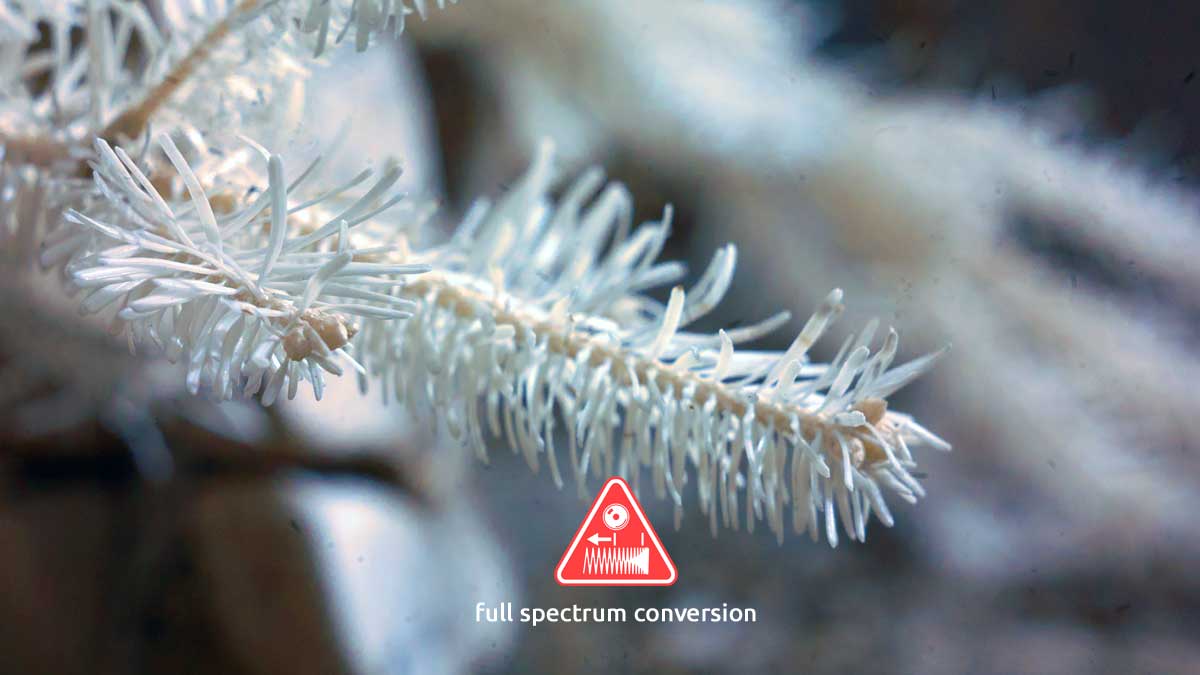|

Note this is a WIP thread about my progress on the full spectrum conversion. Photos can be found in the photography section
Finaly got my self to the task to do a full spectrum conversion (eg: remove the internal cut filter) from my old Nikon D40 wich was
collecting dust anyway. Was easier than I thought.
DAY 1:
This is the "first light" image after the conversion:

Its a bit shaky due to the low light condition (conversion was done in the late evening. A more proper test was done shortly afterwards:

And with a little color correction in Photoshop I got this result

So now I'm waiting for a infrared filter (visible light cut filter)) to arrive for further experiments.
This could be an interesting endevaour not only for traditional photography (where I got some interesting plans), but for 3d, where I want to test if its possible to get an Subsurface-scattering mask by substracting a uv / visible light image from a Infrared Image.
DAY 2:
Got the filter, and tired to calibrated the autofocus. size is a bit larger wich might open the possebility to use it on my Canon some times in future once the main camera is decomissioned
So until the filter step up rings arrive I have to manually hold the filter in front of the lens. Results look prmissing, here are two images shot with it.

This one used cameras own auto whitebalance and some channel swapping tricks.

Its a bit overexposed but I wanted to experiment with a custom camera whitebalance (from a grey card) and channel swapping....
can't wait to shoot some "real" stuff once the additional hardware arrives.
And the first experiments to get an actual hdri with manual bracketing.
(The D40 does not do auto bracketing, so sorry for the alignment errors... might use the old bracketing program I've wrote a few years back, once I got a hand free to control the netbook)
Also the original features dust on sensor, since its now bare (without a protection) I have to find a save way to remove it carefully

I also tested Affinity Photo wich does allow me to whitebalance (and stack them) on the hdri, wich gives also interesting results

The original hdri for your own experiments can be found here
And the final one for today wich uses a slightly different method to color balance. (Shot with the Helios)

DAY 3:
A weekend later I optimised the color correction techniques, (building presets and workflow ) Since weather was still bad I've only have one image worth to show. (But finaly the step up rings arrived)

DAY 4:
2 weekends later and the "other" side project arrived in the mail. Ordered a cheap ZWB3 (UV Pass Filter) from the well known china marketplace.
To explain what I'm after here is a redraw of the data sheet most sellers do copy from each other.

As you can see this filter passes an extreme amount of infrared through it, and for traditional uv photography this would be an unwanted effect, Especially sinde modern lenses additionally filter a lot of the uv. (Its recommended to use quarz based lenses wich are beyond what I want and beeing able to invest). So the infred spectrum might overblow the uv part quite easily.
Anyway as for the nagging thought to get out a SSS map this filter might be an ideal candidate: since you get both in one shot: Infrared in the red channel, uv in the blue. Not to mention that these filters are quite affordeable (15 bucks).
Initial tests showed that the kit lens of the D40 do filter too much UV, but the Helios does let through a good amount of it, (Although focusing becomes a nightmare) So this the UV/IR Image I've got out of it.

So now for those who are not aware of what I'm after a quick recap:
Shorter wavelenghts (UV) travel less deeper into the skin than longer wavelengths (like infrared). A basic channel extraction to get the light reflected in the lower skin layers (just the red channel) won't do the trick, since there is also a good portion of infrared light wich is bounced off in the upper skin layers.
So you need to substract the uv from the infrared to get some sort of SSS map (And idealy also a spec map from the UV only). After some work in the channel mixer I think I managed to get as much UV "extracted" from the image as possible:

This is practically a specular representation of the skin (and my wool jacket)) Notice the dark parts at the base of the fingernails
And now I substract this image from the full spectrum to get something like this:

So...yeah it somehow works ... for reference defintive. For map extraction I'm not sure, maybe with a complex light rig ?
Also getting the rather low values of the uv channel in correlation to the stronger IR is more artistic than exact science. (But I'll dig deeper into this if I can "calibrate" it)....one thing wich is definitive sure is, that there are more experiments to come.
DAY 4 ADDENDUM:
Ok played a bit more with the extraction techniques, and these two look way more what I'm anticipated as for spec and subsurface scattering mask:


|



